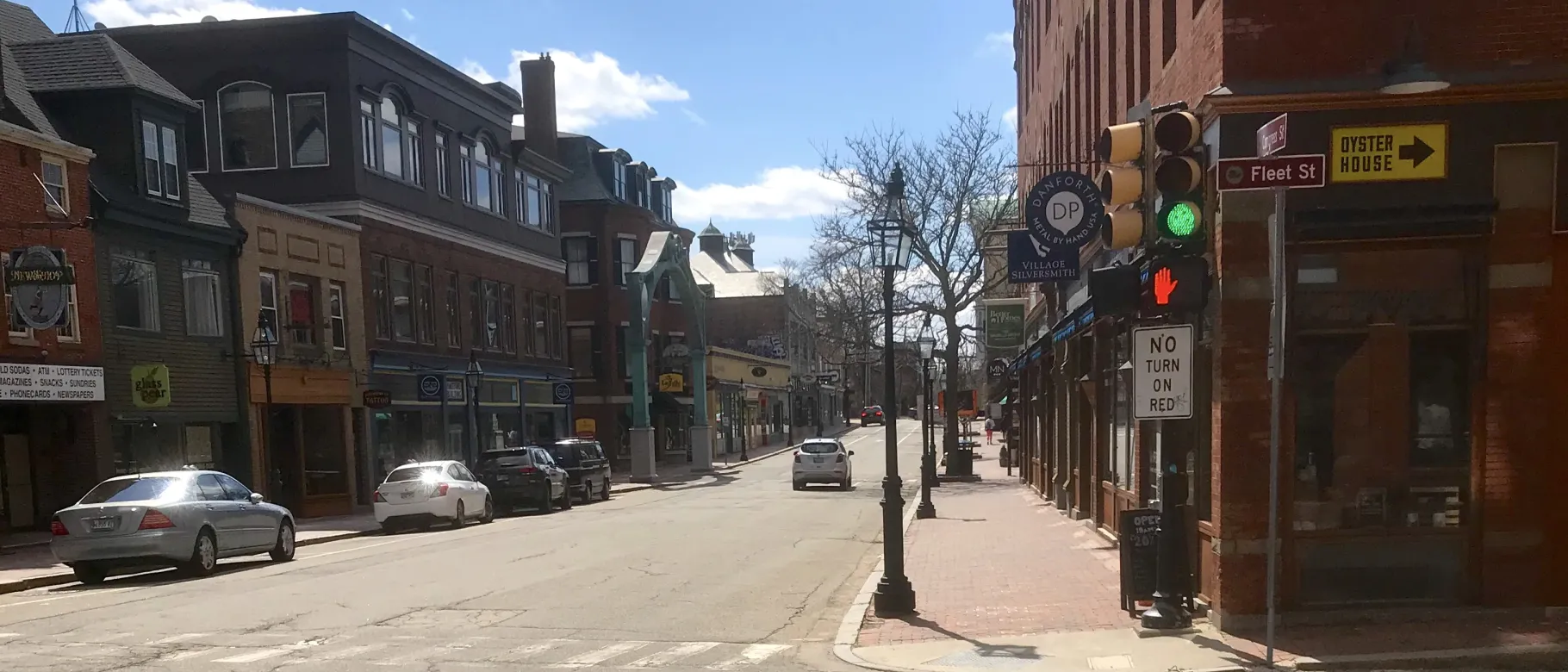Research by M.P.H. alumni explores communities in time of COVID-19

Three alumni of the University of New England College of Graduate and Professional Studies (CGPS) have published a unique, in-depth report observing their communities during the novel coronavirus pandemic using photos.
In “COVID-19 in Pictures: A Multi-State Community Assessment,” Taina Brezault, M.P.H. ’20, Sarah Kilgore, M.P.H. ’20, and Sean Walley, M.P.H. ’20 employ a qualitative public health research method called Photovoice to document their lived experiences in three states throughout the coronavirus pandemic — Brezault in Texas, Kilgore in New York, and Walley in Maine — between April and July.
To complete the project, the then-students were tasked with taking pictures of the impact of COVID-19 on their communities and identifying relevant public health themes related to those pictures. The project was completed as part of a required practicum to earn the Master of Public Health degree.
Using photos to communicate public health messages helps better engage readers and bring public health concepts to life, said Titilola Balogun, M.B.B.S., M.P.H., Dr.P.H., assistant director of Public Health Practice for Graduate Programs in Public Health within the CGPS and designer of the study.
“A picture is worth a thousand words, right?” Balogun remarked. “The inclusion of images in a report allows people to interpret and make sense of what they are seeing for themselves.”
In public health research, pictures for Photovoice projects are typically taken by non-public health professionals. However, Balogun said, she thought such a project would make for an interesting case study for students based on her own lived experiences during the pandemic — long lines for grocery stores, lack of household supplies like toilet paper and cleaners, and food purchasing restrictions — of which she herself incidentally snapped photos.
“I wondered if what I was seeing in Maine was happening in other parts of the country,” she said. “And so, I set up this project with three students across the country to see what they were finding, and, at the end, we found out the themes that were emerging were pretty similar across state lines.”
Themes identified from the students’ photos include access to health care, impacts on mental health, food insecurity, and risk communication and public trust, among others.
One leading theme was the increase in public health education and promotion through signage encouraging people to social distance, wash their hands, wear masks, and stay home if they are sick.
“It’s not typical to find those messages outside of a doctor’s office or pharmacy. But now, everywhere you go, you find those messages,” Balogun said. “That’s a huge opportunity for access to public health information, not just with COVID-19, but with other health issues as well.”
Lastly, the students found social capital to be a predominant message in the photos. Balogun said that social capital — a measure of the cohesiveness of a community — appeared to increase throughout the lockdowns and shelters-in-place.
“Social capital determines how people band together in times of crisis, and we found that, even though social distancing put people apart, in a sense, it also brought people together,” Balogun said. “There was an innate sense of, ‘We’re in this together,’ or, ‘Look out for your neighbors.’”
View the students' research presentation.